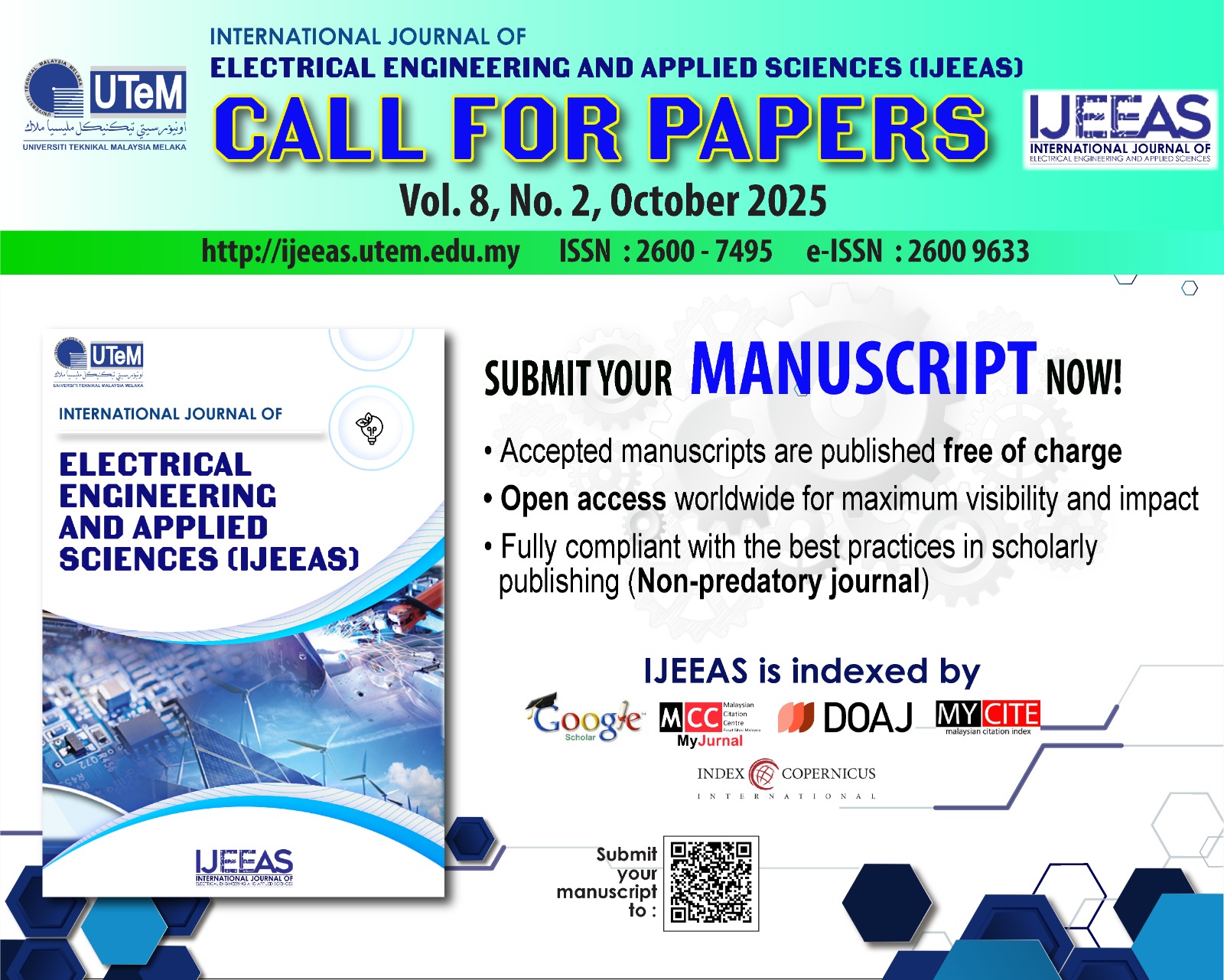Electrical Discharge Triggered Breakdown Phenomena in Main Gap
Keywords:
Breakdown, Discharge, High voltage, TriggeredAbstract
In high-voltage techniques, electrical discharges represent complex problem. The results of the research on the breakdown phenomena in high voltage electrical apparatus insulated by gas can be employed to obtain external and internal insulation design. The electrical discharges can be employed in various applications. The mechanisms of the electrical discharge and the breakdown voltage characteristics of air gaps in the presence of third electrode were investigated in this paper. Breakdown voltage variations are discussed with the parameters influencing the discharge mechanism such as the gap geometry and the applied voltage at the electrode discharge. The results with different geometries of electrodes show that the electrical breakdown mechanism depends on the electrode shape and applied voltage.Downloads
References
Q. Yang, R. Wang, W. Sima, C. Jiang, X. Lan, M. Zahn, Electrical circuit flashover model of polluted insulators under AC voltage based on the arc root voltage gradient criterion, Energies, Vol. 5: 752-769, 2012.
X. B. Cheng, J. L. Liu, B. L. Qian, Z. Chen, J. H. Feng, Research of a high-current repetitive triggered spark-gap switch and its application, IEEE Trans Plasma Sci., Vol. 38: 516-522, 2010.
J. Kikuchi, Y. Suzuki, T. Muto, S. Ibuka, S. Ishii, Effect of DC pre-discharge on the generation of atmospheric pulsed microdischarges, Jpn J. Appl. Phys., Vol. 51: 046001, 2012.
B. Niermann, I. L. Budunoglu, K. Gurel, M. Boke, F. O. Ilday, J. Winter, Application of a mode-locked fiber laser for highly time resolved broadband absorption spectroscopy and laser-assisted breakdown on micro-plasmas, J. Phys. D Appl. Phys., Vol. 45: 245202, 2012.
L. Li, C. Li, Q. Xiangdong, L. Fuchang, P. Yuan, Modeling of switching delay in gas-insulated trigatron spark gaps, J. Appl. Phys.,Vol. 111: 053306, 2012.
M. Gaber, J. Pihler, M. Stegne, M. Trlep, Flashover condition for a special three-electrode spark gap design, IEEE Trans. Power Delivery, Vol. 25: 500-507, 2010.
S. H. Lee, Improving breakdown voltage characteristics of GDAs using trigger voltage, J. Electr. Eng. Tech., Vol. 5: 646-652, 2010.
V. March, M. Arrayas, J. L. Trueba, J. Montanya, D. Romero, G. Sola, D. Aranguren, Features of electrical discharges in air triggered by laser, J. Electrostatics, Vol. 67: 301-306, 2009.
H. H. Zhu, L. Huang, Z. H. Cheng, J. Yin, H. Q. Tang. Effect of the gap on discharge characteristics of the three-electrode trigatron switch, J. Appl. Phys., Vol. 105: 113303, 2009.
F. Tholin, A. Bourdon, Influence of temperature on the glow regime of a discharge in air at atmospheric pressure between two point electrodes, J. Phys. D Appl. Phys., Vol. 44: 385203, 2011.
E. J. Worts, S. D. Kovaleski, Particle-in-cell model of a laser-triggered spark gap, IEEE Trans. Plasma Sci., Vol. 34: 1640-1645, 2006.
M. Hara, Y. Negara, M. Setoguchi, T. Kurihara, J. Suehiro, N. Hayashi, Particle-triggered pre-breakdown phenomena in atmospheric air gap under ac voltage, IEEE Trans. Diel. Elect. Ins., Vol. 12: 1071-1081, 2005.
A. J. Tarilanyo. Comparative analysis of breakdown characteristics for small and long air gaps, Eur. J. Scientific Res., Vol. 45: 324-332, 2010.
L. Arevalo, V. Cooray, R. Montano, Numerical simulation of long laboratory sparks generated by positive switching impulses, J. Electrostatics, Vol. 67: 228-234, 2009.
M. Janda, V. Martisovits, Z. Machala, Transient spark: a dc-driven repetitively pulsed discharge and its control by electric circuit parameters, Plasma Sources Sci. Technol., Vol. 20: 035015, 2011.
A. Settaouti, L. Settaouti, Monte Carlo simulation of electrical corona discharge in air, Elect. Pow. Syst. Res., Vol. 81: 84-89, 2011.
A. Settaouti, L. Settaouti, Numerical simulation of positive corona discharge in air, Int. J. Eng. Syst. Mod. Sim., Vol. 3: 148-154, 2011.
Y. Zheng, B. Zhang, J. He, Onset conditions for positive direct current corona discharges in air under the action of photoionization, Phys. Plasmas, Vol. 18: 123503, 2011.
A. Settaouti, Monte Carlo simulation of avalanche formation and streamer discharge, Electr. Eng., Vol. 92: 35-42, 2010.
A. Settaouti, L. Settaouti, Simulation of electron swarm parameters in air, Int. J. Mod. Phys. B, Vol. 20: 1233-1242, 2006.
Downloads
Published
How to Cite
Issue
Section
License
Authors who publish with this journal agree to the following terms:
- Authors retain copyright and grant the journal right of first publication with the work simultaneously licensed under a Creative Commons Attribution License that allows others to share the work with an acknowledgement of the work's authorship and initial publication in this journal.
- Authors are able to enter into separate, additional contractual arrangements for the non-exclusive distribution of the journal's published version of the work (e.g., post it to an institutional repository or publish it in a book), with an acknowledgement of its initial publication in this journal.
- Authors are permitted and encouraged to post their work online (e.g., in institutional repositories or on their website) prior to and during the submission process, as it can lead to productive exchanges, as well as earlier and greater citation of published work (See The Effect of Open Access).







